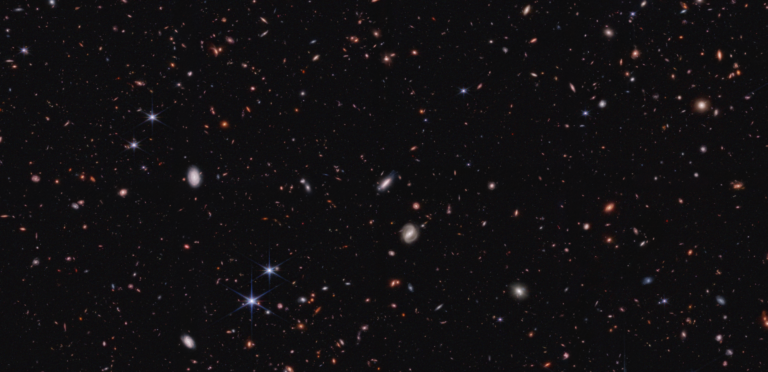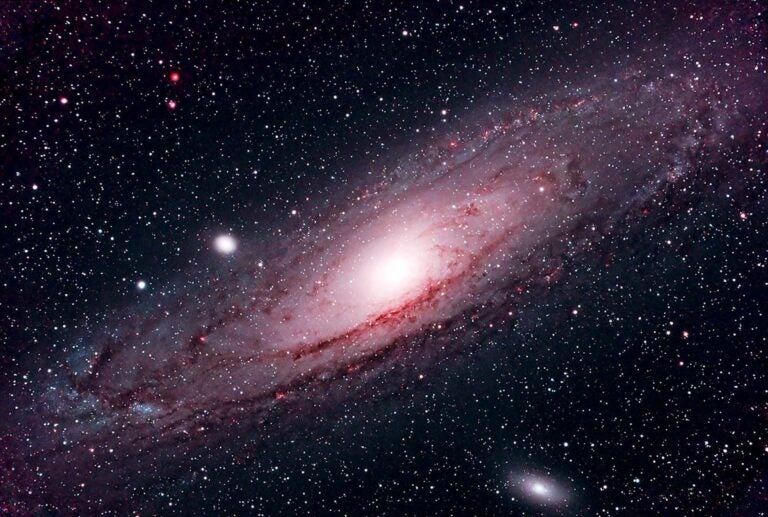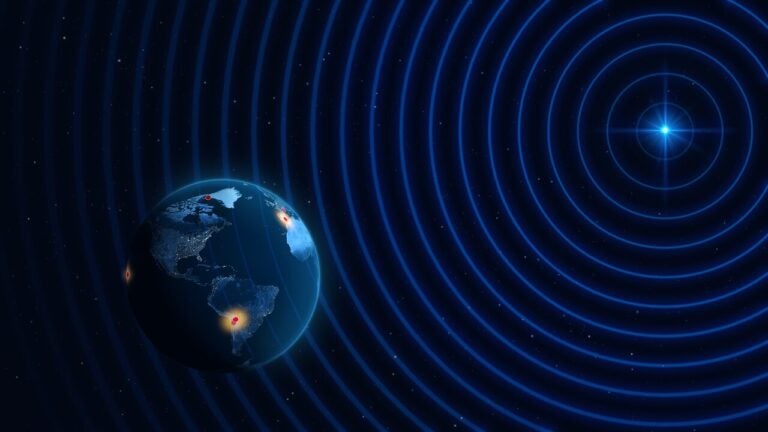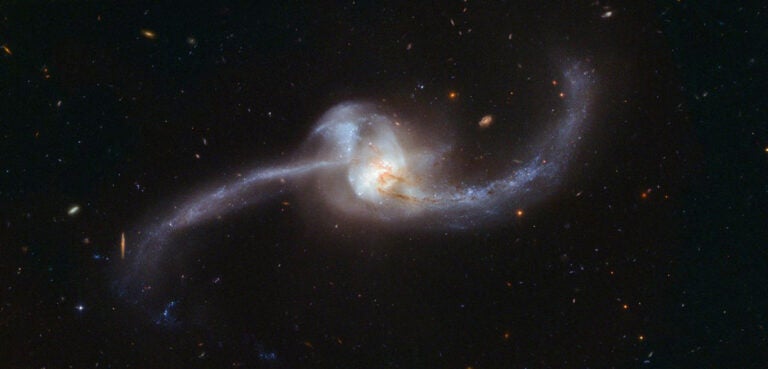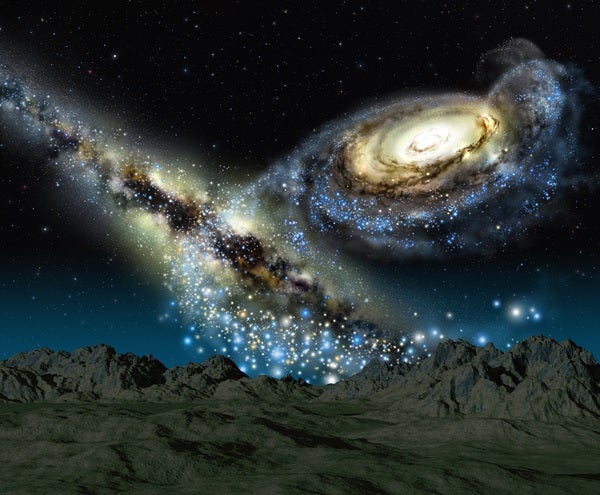
Our galaxy, the Milky Way, and its nearest large neighbor, the Andromeda Galaxy (M31), are on a collision course. Billions of years from now, the merger will transform the structure of both galaxies and create a new arrangement of stars we have dubbed Milkomeda (“milk-AHM-mee-da”). The merger will radically transform the night sky. But into what?
Currently, the Milky Way’s thin disk of stars and gas appears as a nebulous strip arching across the summer sky. As Andromeda grazes the Milky Way, a second lane of stars will join the one that presently graces the night sky. After the final merger, the stars will no longer be confined to two narrow lanes, but instead scatter across the entire sky.
In our research, we have explored the Milky Way’s fate by simulating Milkomeda’s birth in a supercomputer. The simulations are at a sufficient level of detail to learn a lot about the coming merger and how it will change our perspective on the universe. Although we won’t be here to witness the event — nor to take responsibility for whether our forecast proves accurate — this is the first research in our careers that has a chance of being cited 5 billion years from now.
The Local Group
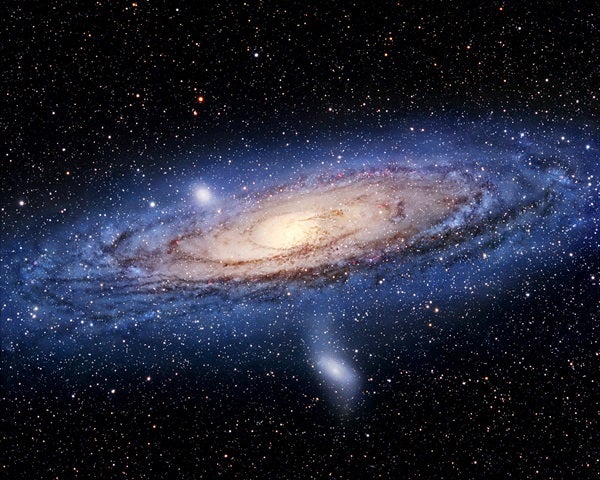
The night sky’s vastness might suggest the Milky Way resides in a relatively remote part of the universe. But astronomers know the Milky Way to be one of the two largest members of the Local Group of galaxies. The other is the Andromeda Galaxy, nearly 2.5 million light-years distant yet visible to the naked eye in the northern sky in dark conditions. The Local Group’s remaining members include a bevy of much smaller satellite galaxies.
A galaxy group contains two or more relatively close, massive members. The compactness of galaxies that form groups suggests that they are gravitationally bound and dynamically coupled to each other. This simply means the galaxies attract each other gravitationally, so a change in one affects the characteristics of the other.
Evidence of the dynamic connection between the Milky Way and Andromeda galaxies comes from their relative motions. The galaxies are barreling toward each other at nearly 268,400 mph (432,000 kilometers per hour). We know this because Andromeda’s light is blueshifted — displaced toward the blue end of the spectrum — by the Doppler effect. In contrast, most galaxies in the universe are flying away from the Milky Way.
Timing is everything
Nearly 60 years ago, astrophysicist Franz Kahn and astronomer Lodewijk Woltjer pioneered the “timing argument.” This hypothesis held that the Milky Way and Andromeda formed close to each other, during the dense, early stages of the universe.
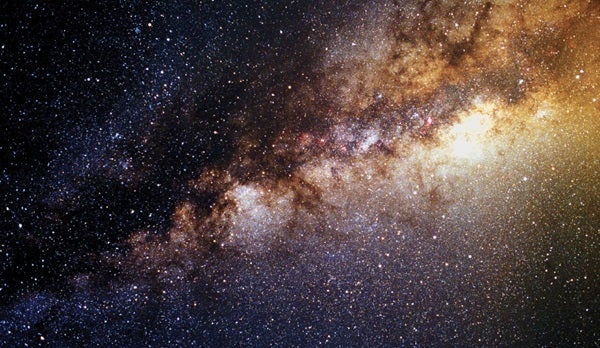
Subsequently, the general expansion of the universe pulled the two galactic neighbors apart. Later, the Milky Way and Andromeda reversed their outward trajectories owing to mutual gravitational attraction. Since then, they have completed nearly a full orbit around each other.
The timing argument, combined with estimates of the galaxies’ relative velocities and other factors, indicates the Local Group contains about 3 trillion times the Sun’s mass. It also suggests the Milky Way and Andromeda will make a close pass in about 4 billion years.
Kahn and Woltjer inspired a generation of studies that further constrained the mass of the Local Group and revealed important characteristics of Andromeda’s orbit, such as its total energy of motion.
But the timing argument does not have the ability to follow the complex dynamics that accompany the merger of extended galaxies. Therefore, it cannot predict the future arrangement of the Local Group. For processes as complex as galaxy mergers, astronomers need more powerful tools.
Simulating the Local Group
Numerical simulations are indispensable for understanding processes too complex to solve with pen and paper. In galactic mergers, for example, simple gravity shapes the merged galaxy. But the sheer number of atoms interacting over time makes it difficult or impossible to simulate the merger without the assistance of massive computer power.
To simulate the evolution of the Local Group, first we create a mathematical model describing its present state. This is straightforward for the Milky Way and Andromeda. Several decades of observations allow us to estimate the quantity of gas, stars, and other matter that the galaxies contain. We can determine a plausible mass estimate for the Milky Way and Andromeda to well beyond the visible inner portion of each galaxy.
However, the combined mass of the Milky Way and Andromeda is still less than nearly every number the equations of the timing argument yield. This implies there is additional mass in the Local Group.
The missing mass turns out to be the diffuse “intergalactic medium” of atoms, gas, and dust between the galaxies. Galaxies are simply the visible peaks of massive icebergs of matter. Much of the mass is not readily apparent, just as most of an iceberg’s bulk lies underneath the water’s surface.
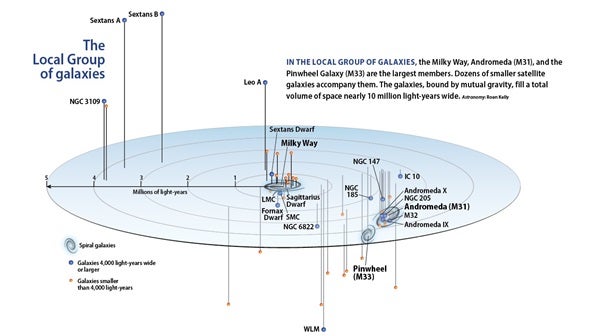
When galaxies collide
Full-scale simulations typically require two weeks of number crunching. This calculation demands power equivalent to that of 16 high-performance desktop computers.
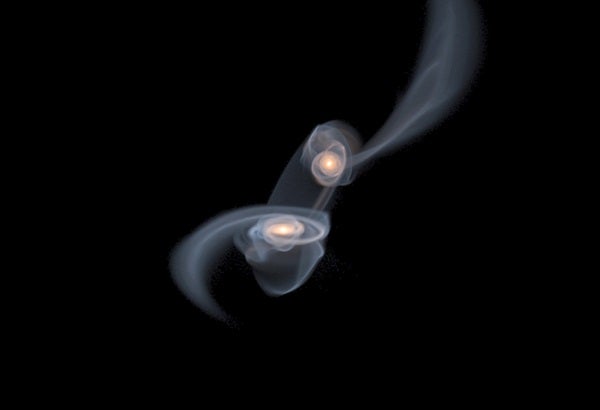
Since the early days of astronomy, merging galaxies have remained curiosities owing to their complex and irregular shapes. But astronomers now appreciate that mergers significantly drive galaxy evolution. Mergers touch off bursts of star formation, give birth to bright galactic cores (quasars), and transform pinwheel-shaped spiral galaxies into spheroidal or elliptical galaxies.
One of the distinguishing characteristics of galaxy interactions is the appearance of long streams of stars and gas that stretch from one or both of the participant galaxies. We commonly call these features tidal tails. Tidal tails develop as a result of the powerful gravitational forces at work between merging galaxies. As the tails form, they rip stars and gas from their home galaxies and hurl them into intergalactic space.
As the Local Group evolves, the Milky Way and Andromeda will begin to have a dynamic impact upon each other owing to their mutual gravitation. As a result, it’s possible the Sun and planets will be dragged into a tidal tail. During this period, an observer would have one of the most spectacular vantage points imaginable. Torn shreds of the Milky Way will fill a large fraction of the night sky as our galaxy experiences its gravitational dance with Andromeda.
Because only a small fraction of a galaxy’s mass ends up in tidal tails, it is more likely the Sun will go for a much less dramatic ride. Most of the stars in merging galaxies remain relatively close to their host galaxies. The chance of the Sun being banished to the tidal-tail boondocks is relatively small, based on our computer simulations.
Change of fortune
The Sun has circled the Milky Way more than 20 times since its birth. During the merger, our home star’s peaceful orbit will forever change. Its new path will be far more chaotic due to the rapid fluctuations in gravity induced by the merger. What would this mean for Earth and its inhabitants?
Our research suggests the Milky Way and Andromeda will begin to interact strongly about 2 billion years from now. The merger will conclude in about 5 billion years. The latter date is especially notable because it coincides with the Sun’s remaining life span. Currently, our Sun is about halfway through its projected lifetime and eventually will begin to expand. As it does, our home star will consume all of its available hydrogen and become a red giant within 5 billion years from now. In short, the Sun will be in its death throes on Milkomeda’s birthday.
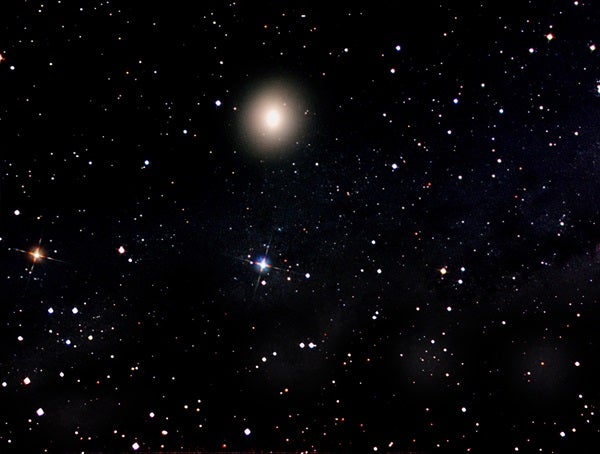
The Sun’s red giant stage will make life on Earth rather uncomfortable. Indeed, it will spell the end of life as we know it. However, it does not preclude the possibility for colonization of habitable planets around nearby stars. Thus, it is possible future astronomers will be able to witness some, if not all, of the Local Group evolution we have simulated.
Although the Milky Way and Andromeda will merge, stars within the two galaxies, such as our Sun, will not physically collide. The reason is the extremely large distances between individual stars in galaxies. For example, if the Sun were the size of a ping-pong ball, the nearest star (Proxima Centauri) would be about the size of a pea and nearly 715 miles (1,150 km) away.
Our final resting place
The Sun’s orbit will follow a chaotic path until the merger concludes. Then the system will relax and expand. The Sun will reside inside a new galaxy: Milkomeda. It will look very different from both its forebears.
The Milky Way and Andromeda are spiral galaxies. That means most of their billions of stars concentrate into a disk and move in nearly circular orbits around the galactic center. In contrast, Milkomeda will be nearly spherical in shape and much smoother in appearance than any spiral galaxy.
In addition, Milkomeda’s stars will follow more complex orbits. They will spend brief periods near the dense galactic center, but orbit much farther away most of the time.
Milkomeda’s spheroidal shape is not unusual. In fact, it characterizes a major class of objects called elliptical galaxies. Such galaxies typically contain relatively old stars. Presumably, many of these galaxies in the present-day universe formed by mergers between galactic disks, in which the stars had formed at earlier cosmic times.
The Sun’s likely fate will be to spend much of its time closer to the outskirts of the galaxy. The merger will redistribute the orbital momentum (energy) of the former Milky Way and Andromeda galaxies among Milkomeda’s billions of individual suns. Because the stars will gain momentum in the course of the merger, they will orbit Milkomeda’s center at a larger average distance.
The Local Group’s fate
Astronomers have discovered that our universe is expanding at an ever faster pace, increasing the distance between galaxies so fast that, eventually, light itself won’t be able to keep pace. A hundred billion years after the merger, Milkomeda will represent our entire visible universe.
In the next tens of billions of years, the accelerating expansion of space itself will pull all distant galaxies farther and farther away from us. Once the recession rate of any distant galaxy exceeds the speed of light relative to us, its light will be unable to traverse the ever-widening gap.
At that point, we will no longer be able to see those galaxies. They will gradually wink out of reach of the most powerful telescopes. No longer will astronomers be able to gaze into the sky and study distant galaxies in order to learn about our own.
However, the prelude to this final gloomy fate would be full of fun. Over the next 5 billion years, astronomers will witness the stellar fireworks in one of the greatest shows of all time: the transformation of the Milky Way and the Andromeda Galaxy into Milkomeda. So sit back and wait for the show to begin.
s





